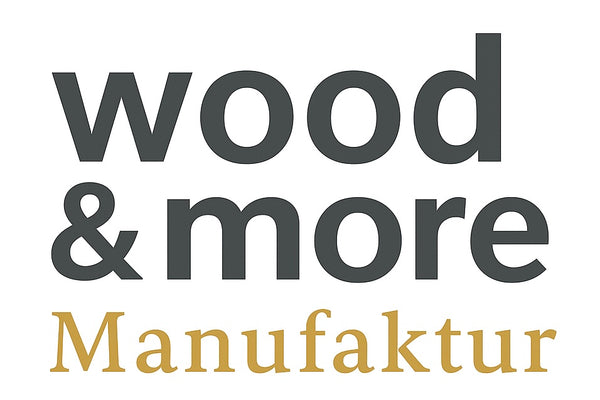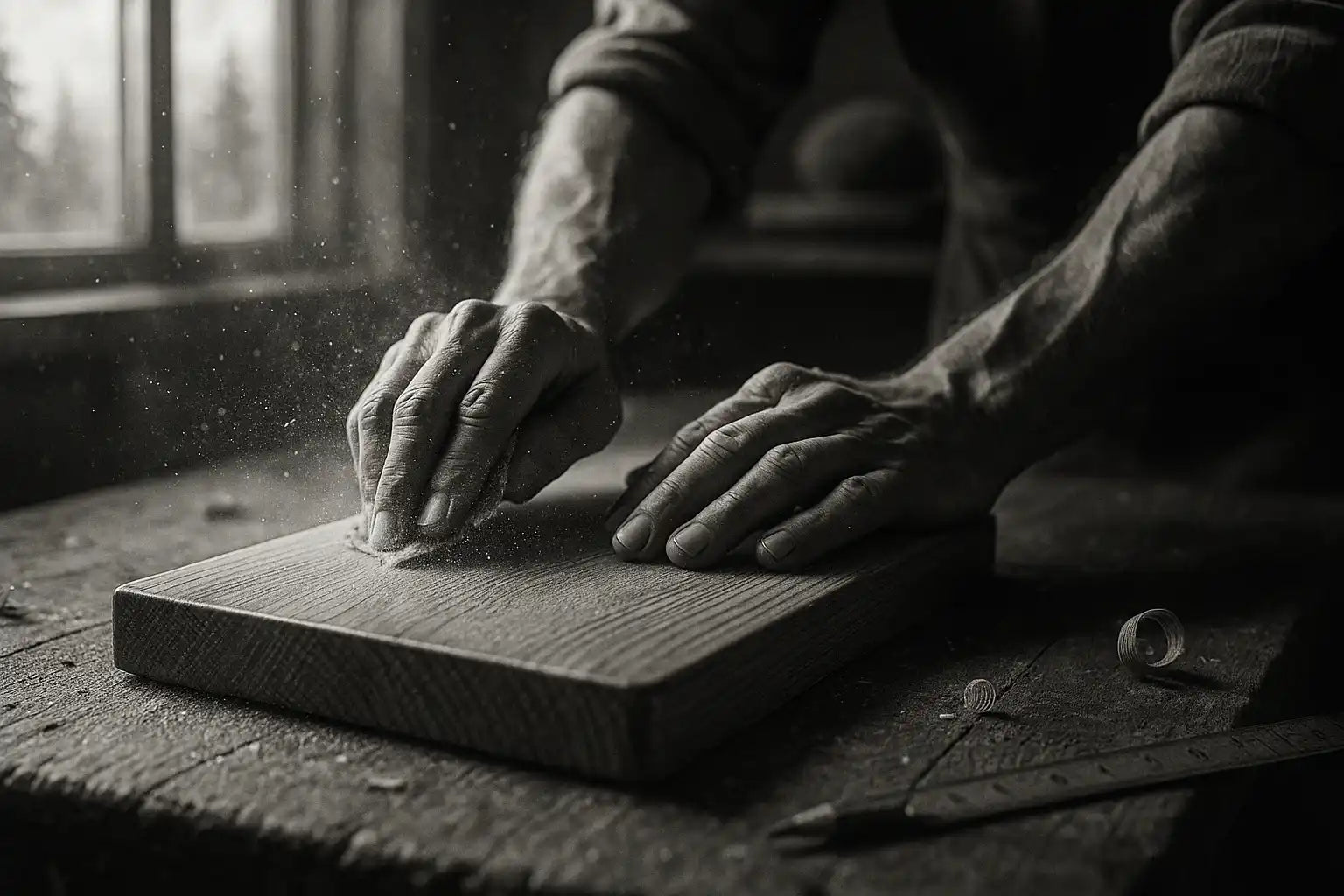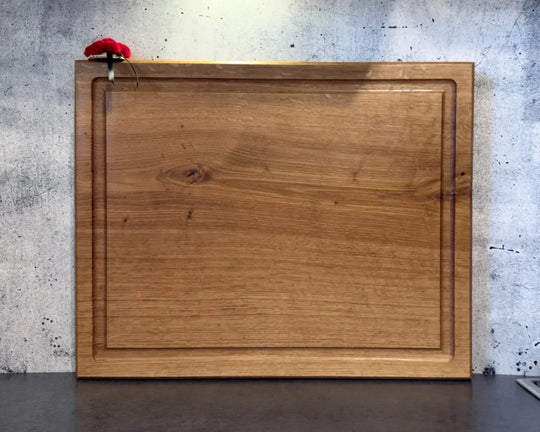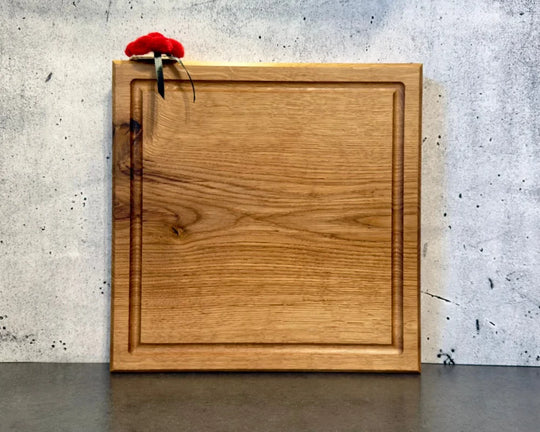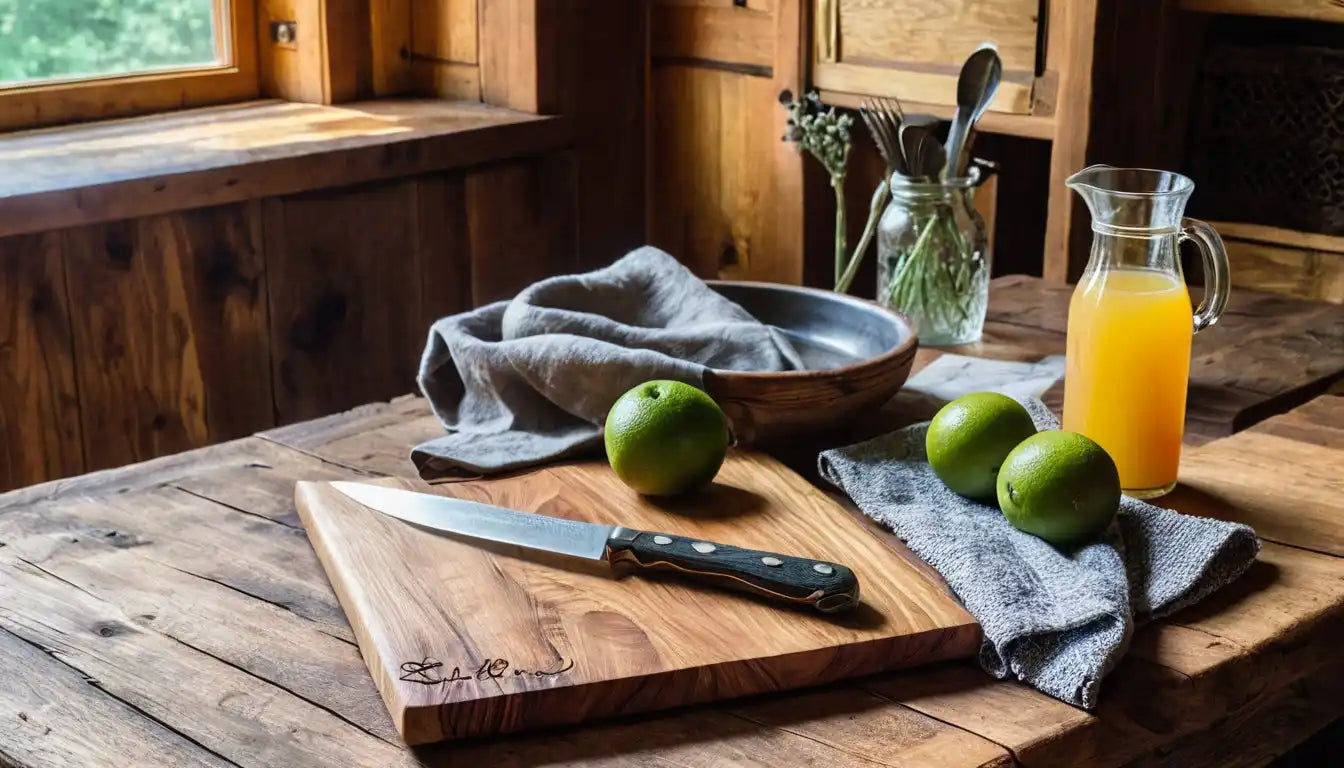Tranchieren ist mehr als nur Schneiden – es ist die Kunst, gegartes Fleisch, Geflügel oder Fisch so zu portionieren, dass Struktur und Saftigkeit erhalten bleiben. Damit das gelingt, brauchst du neben einer scharfen Klinge vor allem ein stabiles Tranchierbrett aus Holz – am besten aus Eiche oder Nussbaum.
Direkt zu unseren großen Tranchierbrettern:
• Eiche 60×40×4 cm – großes Tranchierbrett
• Nussbaum Premium – Tranchierbrett aus edlem Holz
• Pitmaster-Board Kollektion
• Chefstation L 46×32×4 cm
1) Was bedeutet Tranchieren eigentlich?
Der Begriff stammt aus dem Französischen (trancher = schneiden) und bezeichnet das fachgerechte Zerteilen gegarter Speisen in gleichmäßige Stücke. Wer Braten richtig tranchieren will, arbeitet mit Gefühl, einer scharfen Klinge und einem Brett, das sicher und stabil liegt.
2) Warum das Brett beim Tranchieren entscheidend ist
Beim Tranchieren zählt Präzision. Ein zu leichtes oder rutschiges Brett kann den Schnitt unruhig machen. Ein massives Tranchierbrett aus Eiche oder Nussbaum bietet Stabilität, rutschfeste Auflage und ist zugleich messerschonend.
- Eiche massiv: hart, robust und widerstandsfähig – ideal für kräftige Schnitte bei Braten oder BBQ.
- Nussbaum-Holz: feiner, leichter und elegant – perfekt für stilvolles Servieren und feine Tranchierungen.
- Beidseitig nutzbar: eine Seite mit Saftrille fürs Fleisch, die andere glatt zum Servieren.
3) Welche Größe ist ideal für ein Tranchierbrett aus Holz?
Damit du genügend Bewegungsfreiheit hast, sollte dein Brett mindestens 40 × 30 cm groß sein. Für große Braten, Steaks oder BBQ-Cuts empfehlen sich 50 × 40 cm oder 60 × 40 cm mit 4 cm Stärke. Ein großes Tranchierbrett aus Holz liegt satt auf, bleibt ruhig und gibt dir maximale Kontrolle.
- Chefbrett XL Eiche 60×40×4 cm – robustes Tranchierbrett für große Cuts
- Premium Nussbaum Brett – feine Maserung, ideal zum Servieren
- Chefstation L Eiche 46×32×4 cm – kompakter Allrounder mit optionaler Konsole
4) Tranchierbrett mit Saftrille – kleine Details, großer Unterschied
Eine tiefe Saftrille fängt Fleischsaft zuverlässig auf – besonders praktisch bei Steaks, Entenbrust oder Pulled Pork. Das verhindert ein Überlaufen und sorgt für sauberes Arbeiten. Füße oder Gummiringe heben das Brett leicht an, verbessern die Ergonomie und schützen empfindliche Oberflächen.
5) Die richtige Technik: Braten richtig tranchieren
- Lass das Fleisch nach dem Garen 5–10 Minuten ruhen, damit sich der Saft verteilt.
- Schneide entgegen der Faser – so bleibt das Fleisch zart und saftig.
- Führe das Messer in langen, gleichmäßigen Zügen – nicht drücken, nicht sägen.
- Bei Geflügel zuerst Keulen, dann Brustfilets lösen.
- Bei Braten leicht schräg anschneiden – das ergibt ein schönes Schnittbild.
Mit einem Tranchierbrett aus Eiche oder Nussbaum arbeitest du sicher, sauber und mit maximaler Kontrolle – das ist der Unterschied zwischen Schneiden und Tranchieren.
6) Holzarten im Vergleich – Eiche vs. Nussbaum
| Eigenschaft | Eiche massiv | Nussbaum Holz |
|---|---|---|
| Härtegrad | hoch, extrem robust | mittel, feinporig |
| Gewicht | schwer, stabil, satt aufliegend | etwas leichter, elegant |
| Farbton | hell bis mittelbraun | dunkelbraun mit edler Maserung |
| Ideal für | Braten, BBQ, kräftige Schnitte | Fisch, Servieren, feine Cuts |
7) Pflege deines Tranchierbretts
Ein gutes Holzbrett braucht Pflege – aber keine komplizierte. So bleibt dein Tranchierbrett aus Holz lange schön:
- Nach Gebrauch mit warmem Wasser und mildem Spülmittel reinigen, nie einweichen.
- Abtrocknen und stehend mit Luftzirkulation lagern.
- Beidseitig ölen, besonders nach intensiver Nutzung oder Kontakt mit Flüssigkeiten.
- Kleine Kratzer mit feinem Schleifpapier (180 → 240 → 320 Körnung) ausgleichen.
Pflegeprodukte findest du hier: Pflege & Zubehör
8) Fazit – das perfekte Tranchierbrett für Küche & Grill
Ein Tranchierbrett mit Saftrille aus Eiche oder Nussbaum ist mehr als nur eine Unterlage – es ist das Fundament für saubere Schnitte, stilvolles Servieren und echtes Handwerksgefühl. Ob am Grill, in der Küche oder am Tisch – ein massives Holzbrett verleiht jedem Tranchiervorgang Charakter und Stabilität.
Empfohlene Bretter bei wood & more:
Eiche 60×40×4 cm | Nussbaum Premium | Chefstation L Eiche 46×32 cm | Pitmaster-Boards
FAQ – häufige Fragen zum Tranchierbrett
Was ist der Unterschied zwischen Schneiden und Tranchieren?
Tranchieren bedeutet das saubere Portionieren gegarter Speisen mit Rücksicht auf Faser und Struktur – also präziser, ruhiger und kontrollierter als normales Schneiden.
Welches Brett ist ideal zum Tranchieren?
Ein Tranchierbrett Eiche massiv für BBQ und Braten oder ein Tranchierbrett Nussbaum Holz für feine Cuts – beide bieten Stabilität, Gewicht und messerschonende Oberfläche.
Welche Größe ist ideal?
Mindestens 40×30 cm, optimal 50×40 cm oder größer. Ein großes Tranchierbrett aus Holz gibt dir Platz und Sicherheit beim Arbeiten.
Wie pflege ich mein Brett?
Feucht reinigen, sofort trocknen, regelmäßig beidseitig ölen. Keine Spülmaschine, kein Einweichen.
Kann ich das Brett auch als Servierbrett nutzen?
Ja – besonders Nussbaum-Bretter mit geölter Oberfläche sind ideal zum Servieren von Fleisch, Käse oder Antipasti.
